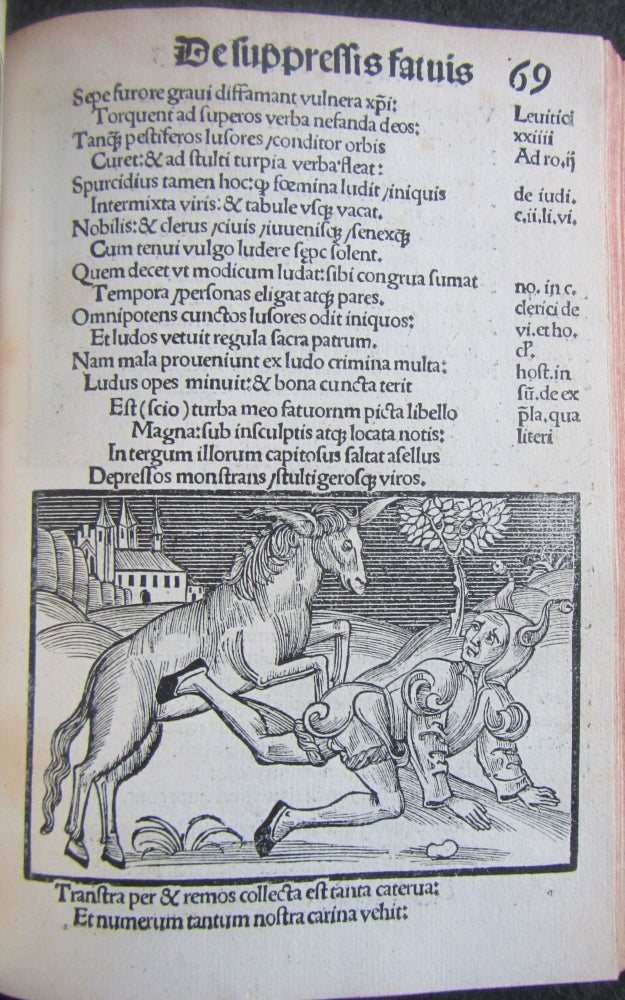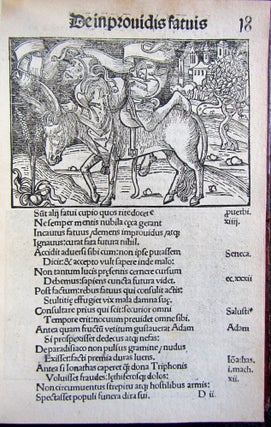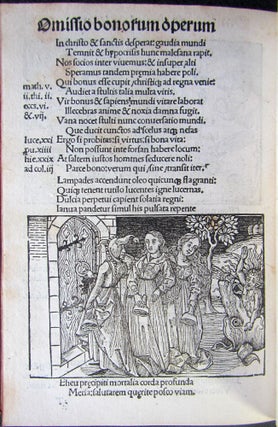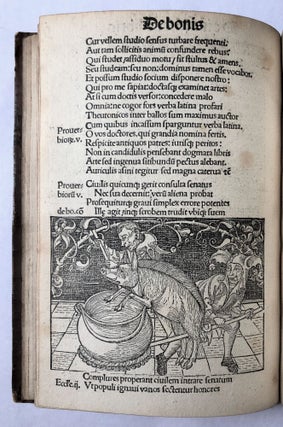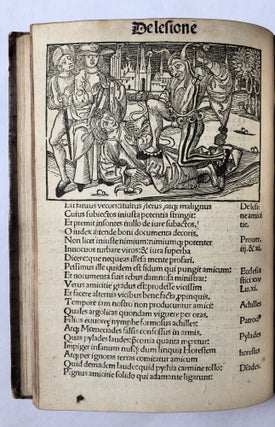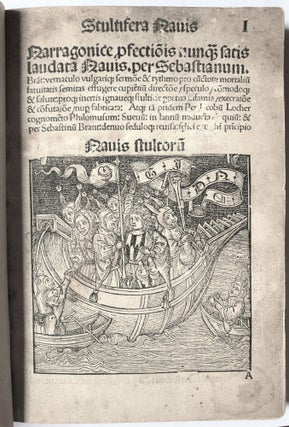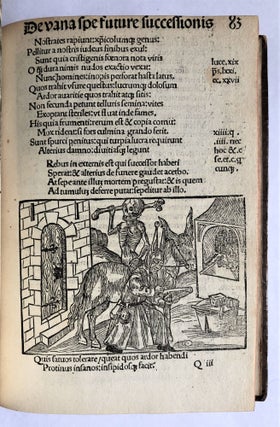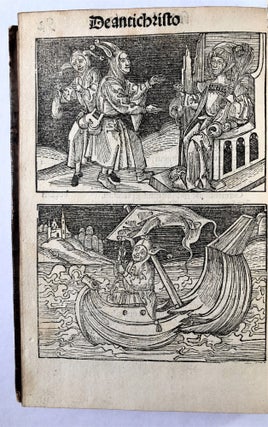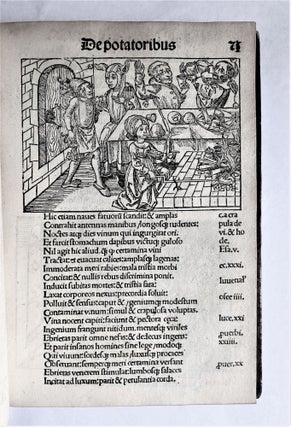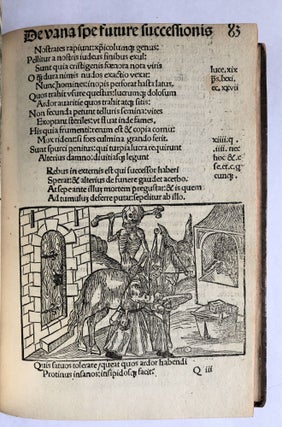Stultifera navis. Strassburg: Johann (Reinhard) Grüninger, 1 June 1497.
4to (195 x 135 mm). Collation: A-B6 C-H4.6 I4 K-X4.6 y6. 112 leaves, foliated with errors 1-”116”. 35-38 lines (variable) and headline. Types: gothic type 17:145 (title and headlines), roman type 22:89 (text). A few spaces for initials, unrubricated. 118 woodcut illustrations printed from 78 blocks. Title stained and soiled and with a small hole, upper margins of final quire repaired, affecting 3 headlines; shaving to a few sidenotes, one or two headlines, and edge of woodcut on x4r. Eighteenth-century acid-stained calf, edges red-sprinkled (joints split, head and tail of spine chipped); modern chemise and slipcase. Provenance: with Lathrop Harper, catalogue 239 (1984), no. 5; Helmut N. Friedlaender, bookplate.
The most influential satire of the humanist movement; a pirate edition of Brant’s Narrenschiff, the Ship of Fools, using woodcuts commissioned by the printer, Johann Grüninger. “The most important of a long line of moralizing works in which the weaknesses and vices of mankind are satirized as follies” (Printing and the Mind of Man 37), Brant’s Ship of Fools relates the sea voyage to “Narragonia” of 100 fools, including representatives of every human and social type, not excepting the writer (in a chapter titled “On the uselessness of books”).
First published in German in 1494, the poem was devoured by the reading public, inspiring the rapid appearance of unauthorized or counterfeit editions and imitations throughout Europe. This Strassburg edition was one of several such counterfeit reprints. It was the fourth such piracy published by Grüninger, who had already copied the German edition three times (GW 5048, 5050 and 5051), or perhaps more, some editions being possibly lost. The Latin translation, first published by Johann Bergmann 3 months earlier, on March 1, 1497, was by Jacobus Locher (Philomusus), in collaboration with Brant.
For this edition Grüninger used the woodblock stock from those earlier editions, adding a few additional cuts and varying the pattern of repetitions. The woodcuts follow the iconography established by Brant, and probably Dürer, for the original Bergmann editions, but the stylistic treatment is quite different. Apparently the work of two or three master Formschneider, the cuts are noteworthy for their parallel hatching, producing an effect of striking dark backgrounds and skies. The result “renders an eerily dark tone to many illustrations and precludes coloring” (Lathrop Harper description, catalogue 239).
ISTC ib01089000; Goff B-1089; GW 5057; BMC I:112; Walsh 180; Bod-inc B-509; BSB-Ink B-819; Schramm XX p. 23; Schreiber 3570.
No longer available

